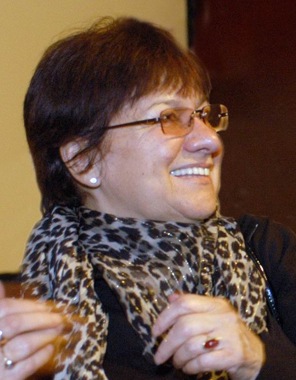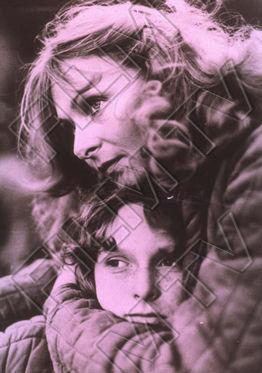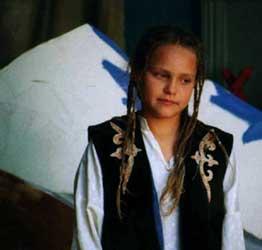|
The story of Hungarian cinema parallels Hungarian history in the 20th Century, a troubled narrative that includes the end of the Austro-Hungarian Empire, two world wars, failed revolutions, and the rise and fall of communism. No other national cinema has had to endure the devastating impact of a fascist dictatorship, the complete destruction of its facilities, state control, and censorship, and a 'systems change' in 1989. On top of that, Hungary had to contend with the periodic emigration of its most talented filmmakers (after 1919, in the late 30s, after World War II, in 1956 and later) and yet has had moments of exceptional filmmaking, producing exciting and innovative films that are deeply engaged in social and moral issues and that attempt to come to terms with this troubled past.
In spite of its political changes throughout the years, Hungarian cinema cannot be reduced to the cliché of angst-ridden allegories about suppression and repression. From the first film screenings around 1920, the development of Hungarian cinema followed the pattern of other European countries. The first Hungarian narrative film was screened on 14 October 1912, directed by Mihály Kertész (later famous as Michael Curtiz, the director of "Casablanca").
The defeat of 1919 and the Treaty of Trianon led to artistic decline and an exodus of major filmmaking talent and Hungarian cinema reached a low point that continued until the end of World War II.
The long post-war period (1948 to 1989) was dominated by the Soviet model. For a brief period after the war, Hungarian cinema reflected the Moscow party line and the official style of Socialist Realism. But after the death of Stalin and the de-Stalinization of the arts, the situation for filmmakers improved dramatically.
Influenced by the French New Wave, Hungarian films became individualized, dealt with ambivalent social and moral issues, and experimented with a variety of film styles. This unique mix of state control and artistic freedom, along with diminished censorship, a revamping of the studio system and a more open policy of the Film Academy, led to a flowering of Hungarian cinema -- a 'new wave' in which movies were overtly critical of the political power structure.
Leading filmmakers such as Miklós Jancsó experimented with long takes, superb compositions, and graceful tracking shots to make complex movies that interrogated Hungarian history and its implications for contemporary audiences.
Although Jancsó, like a few other filmmakers − Károly Makk, Márta Mészáros, István Szabo − managed to attract audiences at home as well as international audiences. Many films have not been distributed in the West, and Hungarian audiences, like other European audiences, have always preferred Hollywood products.
After the fall of communism (1989) there was a significant decrease in the role of the state, especially in terms of state subsidies, and a concomitantly greater stress on entrepreneurial skills in a capitalist market.
Márta Mészáros is not only the most famous female Hungarian director and also one of the most significant woman directors to emerge from central Europe, but also a director who has taken the issue of women in modern society very much to heart.
 Born in 1931 in Budapest, she lived in the Soviet Union from 1935 until she graduated from the Moscow Film School in 1965. She has worked in documentary studios in Budapest and in Bucharest where she made almost thirty documentaries. She started out working on newsreels in Budapest and joined the Mafilm Group 4 film unit in 1966, and made her feature debut with "The Girl" (1968), which staked out her artistic territory. Born in 1931 in Budapest, she lived in the Soviet Union from 1935 until she graduated from the Moscow Film School in 1965. She has worked in documentary studios in Budapest and in Bucharest where she made almost thirty documentaries. She started out working on newsreels in Budapest and joined the Mafilm Group 4 film unit in 1966, and made her feature debut with "The Girl" (1968), which staked out her artistic territory.
She is perhaps best known for her autobiographical account of the Stalinist period, "Diary for My Children" (1982), which uses newsreel footage and clips from 1950s features to weave a complex, personal and political portrait of the era. Withheld from distribution in the West for two years, "Diary" finally won a Special Jury Prize at the Cannes Film Festival in 1984. The many films of Hungarian director Márta Mészáros are largely centred on women and their quest to establish stable, loving relationships based on friendship and respect. By creating female protagonists who are forced into situations requiring sudden decisive action and change, she encourages women to discover themselves independently, or through strong friendships with women without the influence or guidance of men. Mészáros' past has played an important role in her choice of subject matter.
 |
By the time she made the Diary films, though, Mészáros was already famous. In 1960, she married Miklós Jancsó, and their sons, Nyika Jancsó and Miklós Jancsó junior, have separately worked as director of photography on a number Mészáros films. After making documentary films during the '60s, Mészáros' career took off throughout the '70s when she made a string of films that drew heavily on an experience that was doubly oppressive – being a woman in an extremely patriarchal society and a subject under a corrupt and heavy political regime.
Although the awful truth of her father's fate had long been suspected, it was not until after 1999 that Mészáros received confirmation from the authorities that he had been executed. These early traumatic experiences were to form the basis of her autobiographical series of "Diary" films during the 1980s, which broke new ground in Hungarian cinema in terms of what they showed politically as well as being sensitive portrayals of the petulance of youthful rebellion and the processes of personal and historical memory.
"A person cannot be freed of their roots," said Márta Mészáros during the final days of shooting of her feature film "Little Vilma: The Last Diary". The film is largely set in Kyrgyzstan, on the very site where the filmmaker spent her early childhood. Her family immigrated to the Soviet Union in 1936. In 1938, her father, noted sculptor Laszlo Mészáros, was arrested and imprisoned. He was never seen again. Soon after, her mother died of typhoid fever. Marta moved back to Hungary in 1946. She eventually returned to the Soviet Union to study film. Like the earlier films in her Diary series, this autobiographical film will reveals the story, largely unknown in the west, of a whole generation of survivors of the Soviet Gulag.
A day of filming "Little Vilma: The Last Diary" in Bishkek, the capital of Kyrgyzstan, was more reminiscent of a family gathering than the shooting of a film. Nyika Jancsó, the son of the director, sitting at the camera, the director's father played by her actor-husband's son, Lukács Nowicki, while the main character portraying Little Vilma, or Mészáros in her youth, is played by her twelve-year-old granddaughter Cleo Ladányi.
In an interview with Andrew Princz, Mészáros stated: "The film is more of about memories. Every person has memories, and great artists often write about them in their novels. Fellini and Bergman often made films about their memories, and many refer to their childhood. I myself did not set out with the premise that I had an extraordinary childhood. My starting point was that my parents, along with many others at that time who came to Kyrgyzstan in the thirties, became the victims of Stalinism. These people were killed, and then simply forgotten. I have great respect for those who make films about the Holocaust, because there is a great need for them. At the same time, there is little talk about the Gulag and there is only little mention paid the twenty million people who were murdered during the Stalinist regime. There are several reasons for this silence. Partly, nobody wants to be in conflict with the Russians. Fascism has been dealt with and was judged evil. Stalinism, on the other hand, is considered a private matter for the victims and their survivors. Yet it is not so simple. Foreigners, many of whom were leftist in orientation, were also the victims of the Stalinist regime. Europe was a very difficult place to live in the nineteen-thirties. There was the rise of fascism, then Hitler's victory in Germany. In the Soviet Union, these things were unknown. In America during the nineteen sixties some young people started to rebel, and then joined the left. They went to the Soviet Union, and many were then destroyed by the system. When I started to film the trilogy, I felt that these people cannot be forgotten. However, some ten years ago, I could not have even dreamed of making this film in the Soviet Union, in Russia nor or in Kyrgyzstan…"
And about her family being part and parcel of the film: "It was a given. I have already made films with my son Nyika, the cameraman. It was only natural that I want to work on this with him. My other son, Zoltán, the father of Cleo, is also part of the crew. I thought that my granddaughter,  Cleo, would be able to play my childhood-self. Luckily, she is even better than I imagined her in this role. She is very talented. She was a bit scared at first, but then she got very good at it. Cleo knows that she plays me as a child, but in the end; it is not absolutely necessary that it should be me." Cleo, would be able to play my childhood-self. Luckily, she is even better than I imagined her in this role. She is very talented. She was a bit scared at first, but then she got very good at it. Cleo knows that she plays me as a child, but in the end; it is not absolutely necessary that it should be me."
Márta Mészáros' films are a significant weaving together of multiple strands of analysis − aesthetic, socio-cultural, personal/autobiographical, gender roles and feminism in a way that both matches and honours the complexity and uniqueness of her and her films, not to forget her problematic relationship to Western-oriented feminist theory and criticism. As early as the 1970s, Western feminist film critics had begun to claim Mészáros as a maker of `women's films'. Mészáros, however, regards the term `feminist', as applied to her own work, with skeptical ambivalence, defining the significance of her contributions toward privileging female characters and developing distinctive Hungarian/East European women's perspectives in her films, but without pigeonholing her films into Western-oriented feminist categories.
Her film "A szerencse lanyai" (Daughters of Luck, 1998) was high on most people's must-see list. "A szerencse lanyai" certainly starts off firmly rooted in the documentary tradition, and the farewell party for Natasha is a careful piece of documentary observation. The bulk of the film, however, is a sexual fantasy. Mészáros soon sweeps aside the degradation and humiliation that comes with Natasha's inevitable decline into prostitution and portrays the "work" as empowering and even liberating. Natasha soon becomes internationally famous and clients come from all over the world for her services. The camera hovers lecherously over her naked body and savours her sensuality, lit by a warm orange glow.
Prostitution: Women triumphing over men?
Despite this idyllic portrait of her profession, the film does not end happily for Natasha, though. Her one worry is that Masha will be forced into prostitution like she was. Pan Robert, her pimp, insists that this will not happen and indeed his interests in Masha are on a far different level. Masha decides she has a new father in her life and runs off with Pan Robert. Natasha is freed from prostitution and the generous Pan Robert gives her more than enough money to return to her husband in Russia and live a "normal" life.
"A szerencse lanyai" is an intriguing work and a critical approach towards the fact that many Russian women actually have to sell themselves abroad for bread to put on the family table.
As Mészáros puts it: "If we are truly to validate feminist claims that authenticate and honour subjectivity and difference, we must consider the vexing question of critical appropriation of `second world' realities by `first world' formulations, despite the integrity of the appropriators' intentions".
|